Many artists are plagued with self-doubt, including some of the great ones, but there are several ways to overcome these fears and make better art:
The first of these are quick, small studies and sketches which can be made before a particular detail in the main work is executed. In mosaic, a “sketch” can be an arrangement of tile made loosely on your worksurface.
TIP: You can do quick-and-dirty sketches when you encounter a detail that turns out to be more difficult than original anticipated. Studies and sketches need not be limited to before the main composition. They can be done as needed throughout the process.
The second way to build artistic confidence is a series of small works where the same composition is executed repeatedly with variation. This gives you many bites at the apple and allows you to learn from your mistakes without a large amount of time being committed to each work.
TIP: Even when your series of smalls isn’t the same composition, they can build confidence if their size is the same.
In mosaic, working at the same resolution/size makes the artist expert at knowing what details are practical for them to render at that resolution and what details are impossible.
If all your mosaics are different sizes/resolutions, then each mosaic has a different limit of detail that is possible.
The third way to improve your mosaic game is to use a temporary surface to lay out the design so that it can be revised as needed before mounting.
Lastly and most importantly, be aware that a lack of artistic confidence can be a self-fulfilling prophecy if you let it.
Artistic Doubt and Complacency
Why is knowing this fact so important for creating better mosaic artwork?
Am I overselling it? Am I merely trying to encourage mediocre artists for the sake of growing the popularity of mosaic or selling tile or something like that?
Far from it. We don’t need more mediocre artwork.
What we need is the best artwork we can make, and artistic doubt often causes us to make art that is incrementally more mediocre, especially if there are unexpected difficulties or the piece in question is taking much longer than expected.
If you doubt yourself, there is more inclination to accept mediocre results on a particular detail and advance to the next detail just to keep things moving.
Why revise it one more time if you don’t really think you can do it any better?
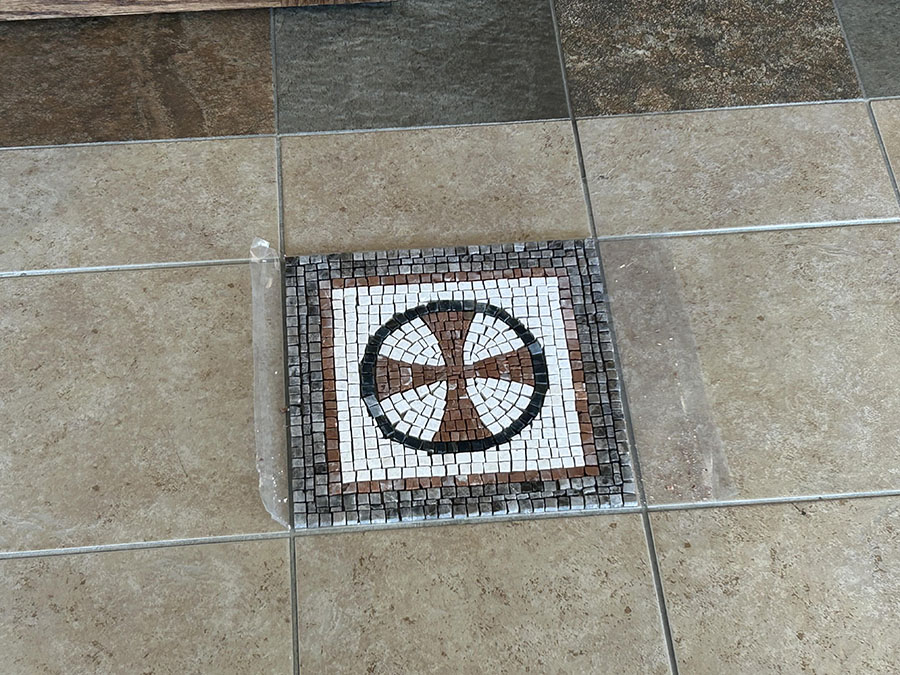
Passion Projects
Many first-time mosaics are something of a passion project: a person has thought about making a mosaic for years or decades, and then suddenly one day they start making one as part of an impulsive emotional decision.
In a passion project, the artist isn’t discouraged by their complete lack of experience, and pure passion for what they are doing seems to sustain them in spite of mistakes and setbacks. My first mosaic was a passion project.
Reverend Colin Wen’s first-time mosaic is a floor inset made from marble mosaic stone and porcelain tile, and I can tell it was somewhat of a passion project for him simply from the number of difficulties he plowed through like minor speed bumps:
When he finally got the mosaic laid out to his satisfaction, he didn’t have the Mosaic Mounting Tape on the surface side of the mosaic and had to transfer the whole design to another sheet of tape on the face and peel the original sheet of tape off the bottom.
Colin also had trouble removing the Mounting Tape after the mosaic was in the hardening mortar, and so he had to remount quite a few individual tiles that had pulled loose.
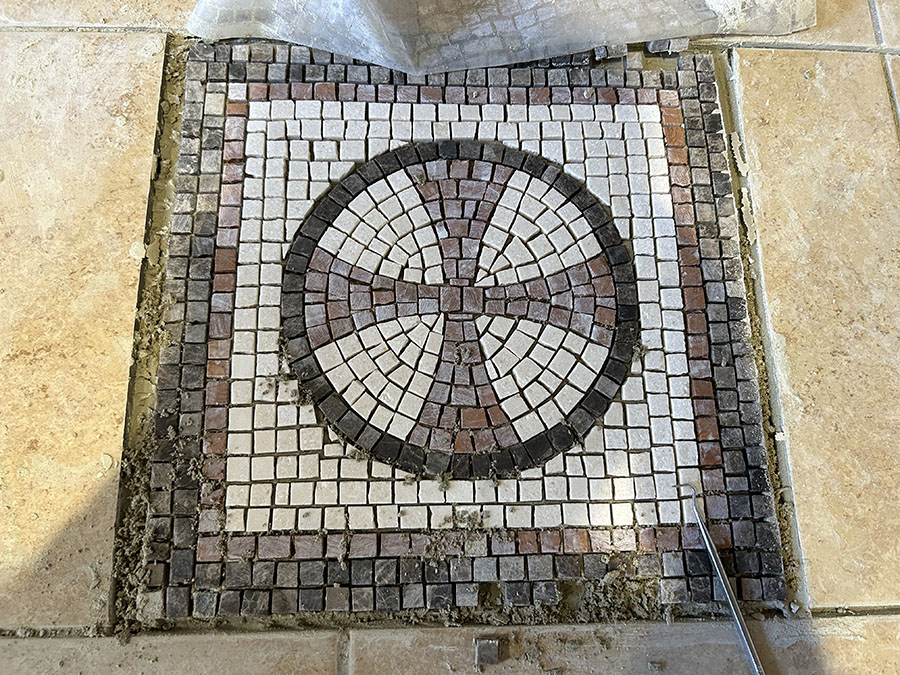
But of all the difficulties Reverend Wen worked through, the one that impresses me the most is that he wasn’t afraid to revise his design when he saw that the original background color didn’t sufficiently contrast the color of the cross.
Think about how many artists would have just gone with the original design because they were already fatigued by the learning curve or the effort already spent or previous difficulties.
Still more beginners would have been tempted to rush things over apprehension about mounting and grouting for the first time. Why bother perfecting the design when you thought you were likely to screw up when it came time to put it in wet cement?
What you see here is a commitment to getting things right overcoming any urge to just get things done.
Our culture generally regards art as touchy-feely and soft. In my experience, it can be hard and character building.
At least it is when you are pushing yourself to make the best work you can.
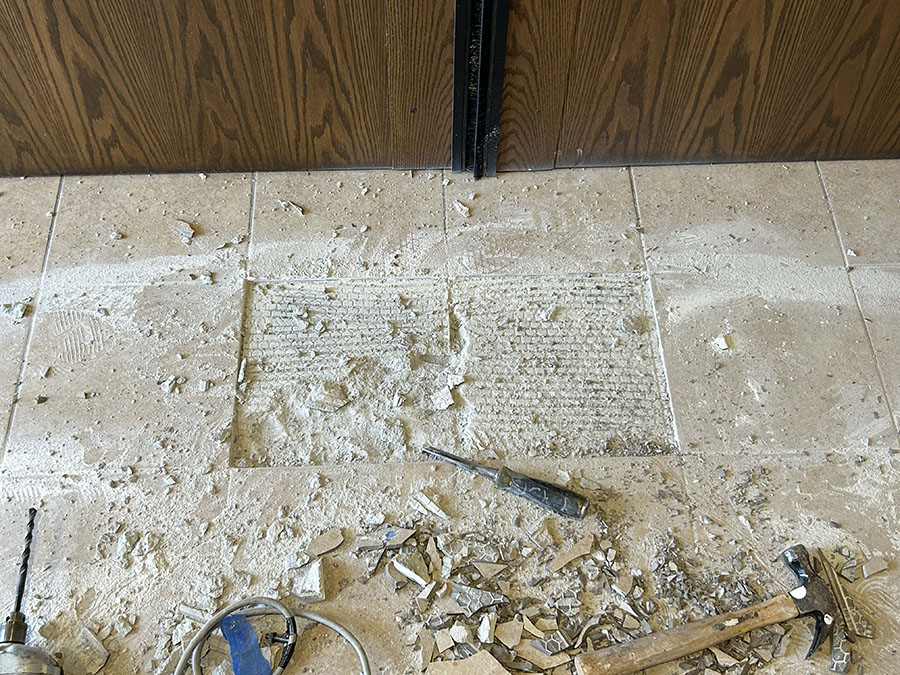
Revision
Laying up a mosaic on a temporary surface allows the artist to revise the design before it is literally set in concrete.
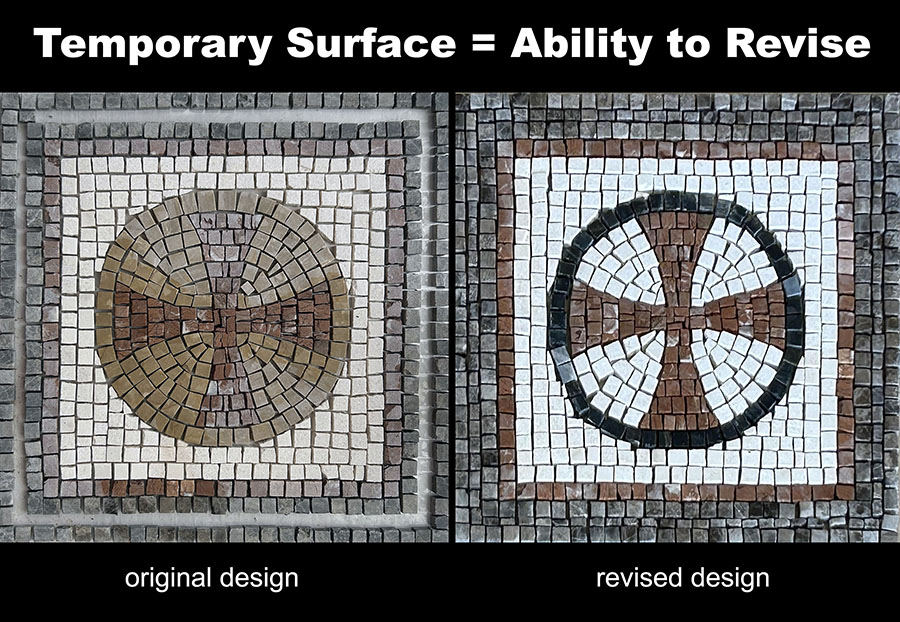
Value Contrast & Backgrounds
Note that the cross is more visible with the revised background because that scheme has contrast in value (light/dark) instead of being a contrast of hues of approximately the same value like the original.
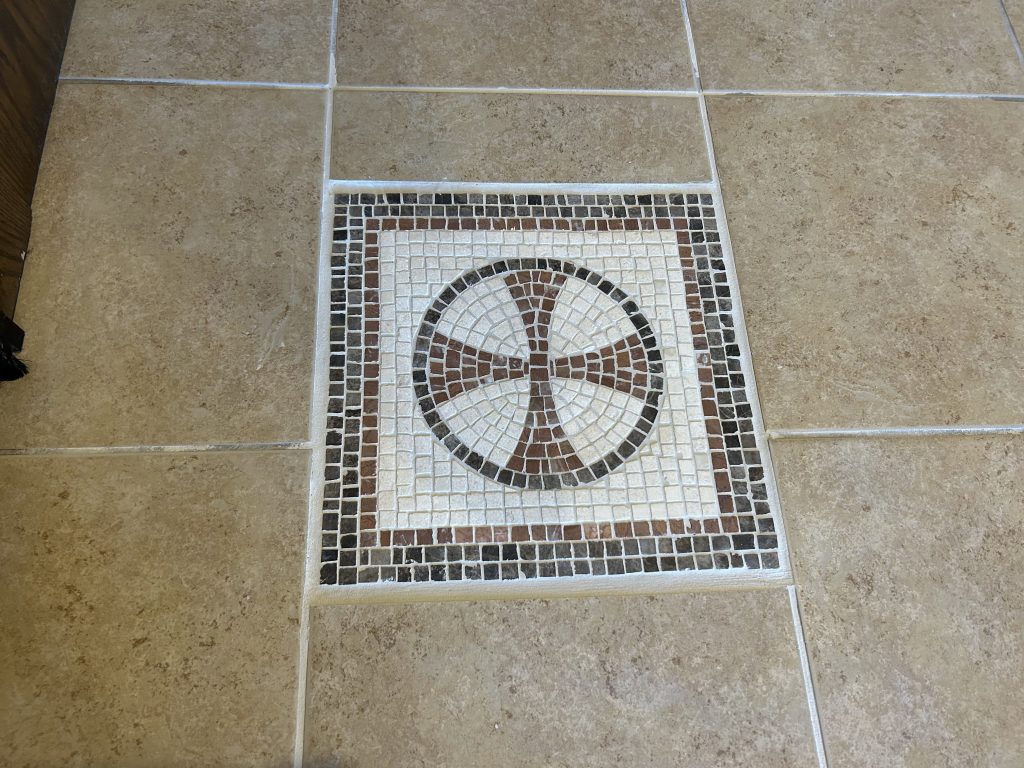
CONGRATULATIONS REVEREND WEN!

Leave a Reply